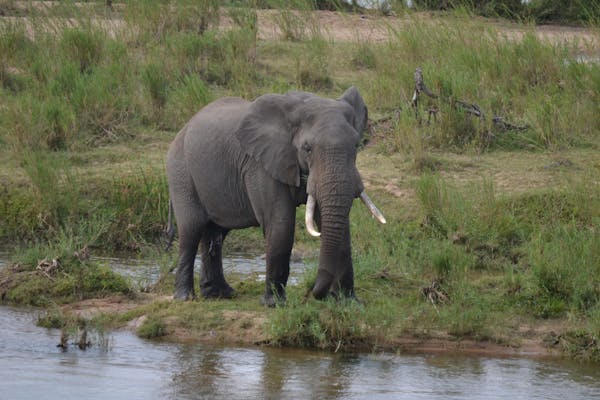Best Time to Visit Tanzania for Safari: A Seasonal Wildlife Guide

Tanzania is one of the best safari destinations in the world, home to famous national parks like the Serengeti, Ngorongoro Crater, Tarangire, and Ruaha. With its vast savannahs, diverse wildlife, and iconic Great Migration, Tanzania offers a truly unforgettable experience for nature lovers and wildlife enthusiasts. However, the best time to visit Tanzania for safari depends on what you want to see and your travel preferences.
In this comprehensive guide, we’ll break down Tanzania’s safari seasons, climate variations, and wildlife highlights to help you choose the perfect time for your adventure.
Understanding Tanzania’s Seasons
Tanzania has two main seasons:
- Dry Season (June to October)
- Wet Season (November to May)
Each season offers unique safari opportunities.
Dry Season (June to October) – The Best Time for Wildlife Viewing
Why It’s the Best:
The dry season is widely considered the best time to visit Tanzania for safari, especially for first-time visitors. With little to no rainfall, vegetation is sparse, and animals gather around water sources, making them easier to spot.
Highlights:
- Great Migration (June–July): The wildebeest migration moves through the western and northern Serengeti. River crossings at the Grumeti and Mara Rivers are particularly dramatic and attract predators.
- Best visibility: Animals congregate around rivers and waterholes, making game viewing predictable.
- Ideal weather: Pleasant daytime temperatures and clear skies.
Where to Go:
- Serengeti National Park
- Ngorongoro Crater
- Tarangire National Park
- Lake Manyara National Park
Green/Wet Season (November to May) – Best for Scenery and Birding
While often overlooked, the green season is still a rewarding time for safaris—especially for seasoned travelers, photographers, and birdwatchers.
November to December – Short Rains:
- Light, short rains bring fresh greenery, attracting herbivores and newborn animals.
- Less crowded than the dry season.
- Birdwatching is excellent as migratory species arrive.
January to March – Calving Season:
- One of the best-kept safari secrets.
- In the southern Serengeti (Ndutu region), thousands of wildebeest give birth.
- Predators like lions and cheetahs are highly active, hunting the vulnerable calves.
April to May – Long Rains:
- This is the low season due to heavy rainfall.
- Some lodges and camps close temporarily.
- Roads can be muddy and challenging.
- However, it offers lush landscapes and the lowest prices of the year.
Month-by-Month Breakdown
June
- Start of the dry season.
- Excellent wildlife viewing.
- Cool, pleasant weather.
July – August
- Peak safari season.
- Great Migration river crossings.
- Book early – high demand.
September – October
- Dry season continues.
- Amazing game viewing in most parks.
- Tarangire shines with massive elephant herds.
November
- Beginning of short rains.
- Fewer tourists.
- Green landscapes and migratory birds.
December
- Short rains taper off.
- Popular for holiday travel.
- Wildlife is still active.
January – February
- Calving season in southern Serengeti.
- Excellent predator sightings.
- Mild weather and fewer crowds.
March
- Rains begin in the latter half.
- Still good for wildlife and photography.
April – May
- Long rains bring muddy roads and closed camps.
- Budget-friendly for intrepid travelers.
- Birdlife is exceptional.
Pros and Cons of Each Season
| Season | Pros | Cons |
|---|---|---|
| Dry (Jun–Oct) | Great wildlife visibility, ideal weather, peak migration | Higher prices, more tourists |
| Green (Nov–Mar) | Fewer tourists, calving season, lush scenery | Some rain, less predictable game sightings |
| Rainy (Apr–May) | Budget travel, birdwatching, green landscapes | Muddy roads, some closed lodges |
Budget Considerations
- Peak Season (July–October): Most expensive time for safaris.
- Shoulder Seasons (June, November): Moderate prices and good conditions.
- Low Season (April–May): Cheapest, but with possible logistical challenges.
Tips for Planning Your Tanzania Safari
- Book early for peak season: Especially if you want to witness the Great Migration.
- Pack for varied weather: Layers for cool mornings and hot afternoons.
- Choose your region based on the season:
- Northern Circuit (Serengeti, Ngorongoro) is great year-round.
- Southern parks (Ruaha, Selous) are best in the dry season.
- Hire a reputable safari company: It’s crucial for safe, smooth logistics and expert wildlife tracking.
Final Thoughts
The best time to visit Tanzania for safari really depends on your travel goals. For those seeking the classic safari experience with abundant wildlife and dry weather, June to October is ideal. However, the green season—particularly during the calving months of January to March—offers equally rewarding and less crowded alternatives.
Whether you want to catch the Great Migration, photograph stunning landscapes, or simply enjoy a peaceful retreat into the wild, Tanzania has a safari season tailored just for you. Plan accordingly, choose the right tour operator, and prepare for an unforgettable adventure.

